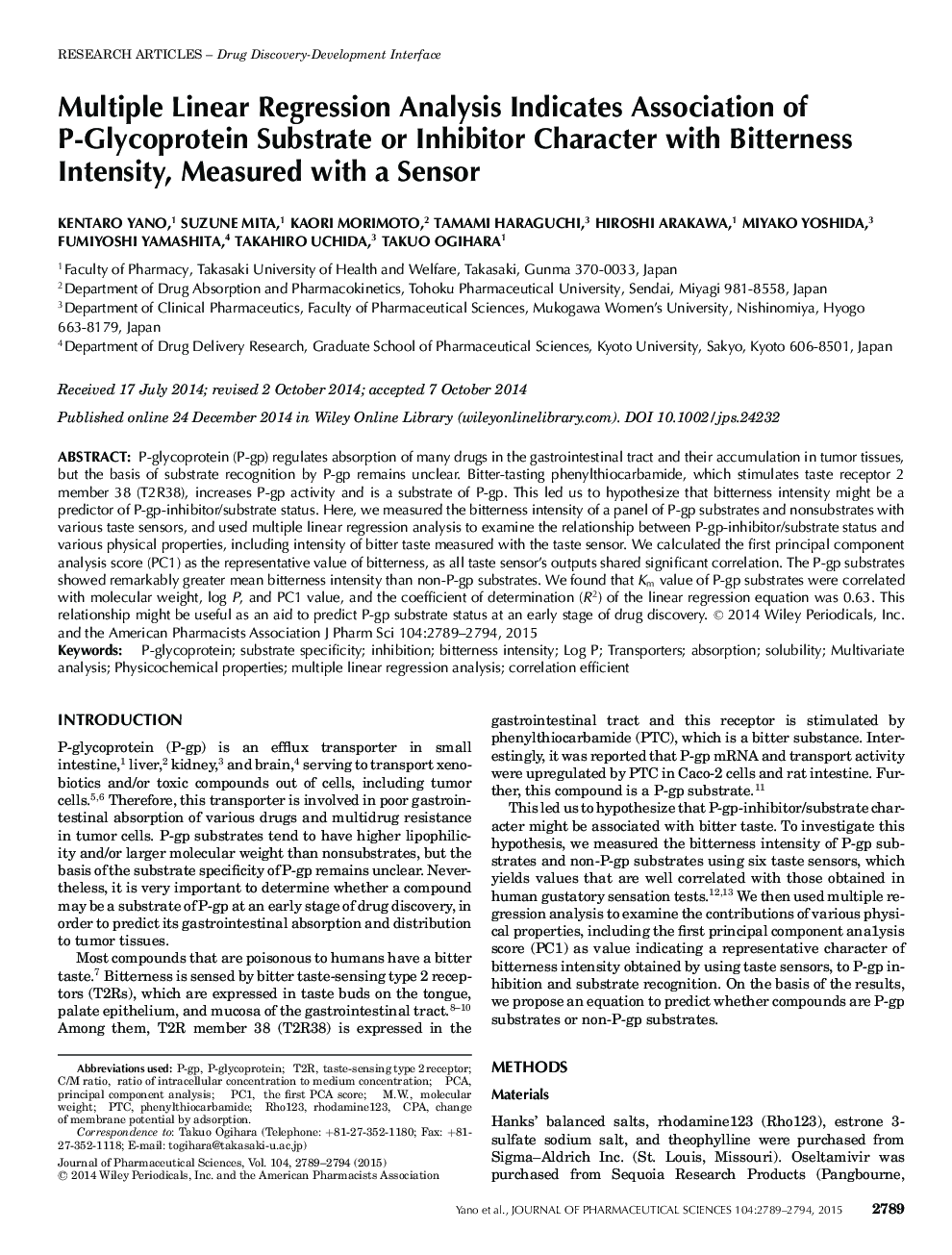| Article ID | Journal | Published Year | Pages | File Type |
|---|---|---|---|---|
| 2484381 | Journal of Pharmaceutical Sciences | 2015 | 6 Pages |
ABSTRACT:P-glycoprotein (P-gp) regulates absorption of many drugs in the gastrointestinal tract and their accumulation in tumor tissues, but the basis of substrate recognition by P-gp remains unclear. Bitter-tasting phenylthiocarbamide, which stimulates taste receptor 2 member 38 (T2R38), increases P-gp activity and is a substrate of P-gp. This led us to hypothesize that bitterness intensity might be a predictor of P-gp-inhibitor/substrate status. Here, we measured the bitterness intensity of a panel of P-gp substrates and nonsubstrates with various taste sensors, and used multiple linear regression analysis to examine the relationship between P-gp-inhibitor/substrate status and various physical properties, including intensity of bitter taste measured with the taste sensor. We calculated the first principal component analysis score (PC1) as the representative value of bitterness, as all taste sensor’s outputs shared significant correlation. The P-gp substrates showed remarkably greater mean bitterness intensity than non-P-gp substrates. We found that Km value of P-gp substrates were correlated with molecular weight, log P, and PC1 value, and the coefficient of determination (R2) of the linear regression equation was 0.63. This relationship might be useful as an aid to predict P-gp substrate status at an early stage of drug discovery. © 2014 Wiley Periodicals, Inc. and the American Pharmacists Association.
